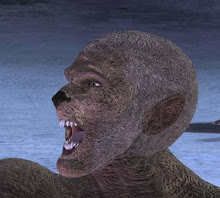Discovery Channel - Original Air Date: 11/10/08
This program (which shares a name/subtitle with an earlier program about the same mystery) starts with a reenactment of an air burst explosion that devastates San Francisco -- a blast similar to the famous Tunguska Event of 1918. Believed originally to be an asteroid or meteor strike, there have been no meteor fragments found. Other possibilities are an explosion from within the earth -- a freak eruption of volcanic gas, a collision with "mirror matter," and even UFOs. The only way to solve the mystery is to gather physical evidence -- and so this show sends an elite group of geologists, physicists, and astronomers to the explosion's epicenter. One scientist, Dr. Kletetschka, believes that half the mass in the universe is trans-dimensional "mirror matter" -- which we can only detect through gravity or when it strikes the earth. He looks for a magnetic signature in the oldest trees left standing. Another scientist, Boslough, believes the event was a low altitude air-burst asteroid explosion, which destroyed over 800 square miles of forest but left no crater. During the event, people heard a series of booms (20-21) and one witness described the sky opening up. The explosion left a butterfly-like "fall pattern." In 2007, an Italian team claimed to have found an impact crater nearby, but expert Boslough sticks with his air-burst theory -- and he seems to have the computer simulations to back him up. This is a high-tech version of the 1960s Soviet matchstick experiment from the earlier Siberian Apocolypse show -- which the show recaps. But Boslough believes the explosion was more powerful, and burns on trees seem to suggest he is right. Kletetschka beleives the air burst came from his mirror matter, and hopes the wood of the trees will provide the magnetic signature proving his theory. They take core samples in the area until they find a tree the right age.
Geophysicist Morgan has a very different theory. He believes that volcanic gasses built up in the basalt (volcanic) planes of Siberia. A massive eruption of superheated gas (a "Verneshot") triggered the Tunguska explosion, and the debris hurled into the air would explain the atmospheric glow reported after the event. He's looking for shocked quartz to help prove his theory. The final theory is that a UFO caused the blast; benevolent aliens saved earth from a meteor by crashing their own space ship into the deadly object. The Russian scientist found no spaceship, but many "strange" rocks. Kletetscha's samples don't have the magnetism he hoped for, though he vows to search again. Morgan does find his shocked quartz, but that only proves a Verneshot might have happened in the past. Tree scarring bears out Boslough's theory, and he is able to adjust his computer model to explain the possible Italina crater as well (by simulating less of the asteroid exploding). Though the final verdict is still out at on the event's cause, NASA scientists urge that we guard our planet against strikes by near-earth asteroids.
Monday, November 17, 2008
Subscribe to:
Post Comments (Atom)





No comments:
Post a Comment